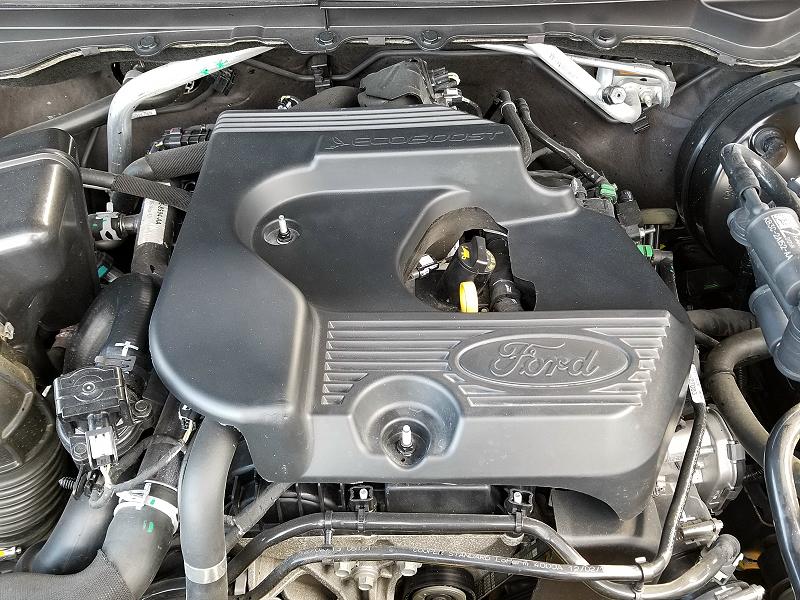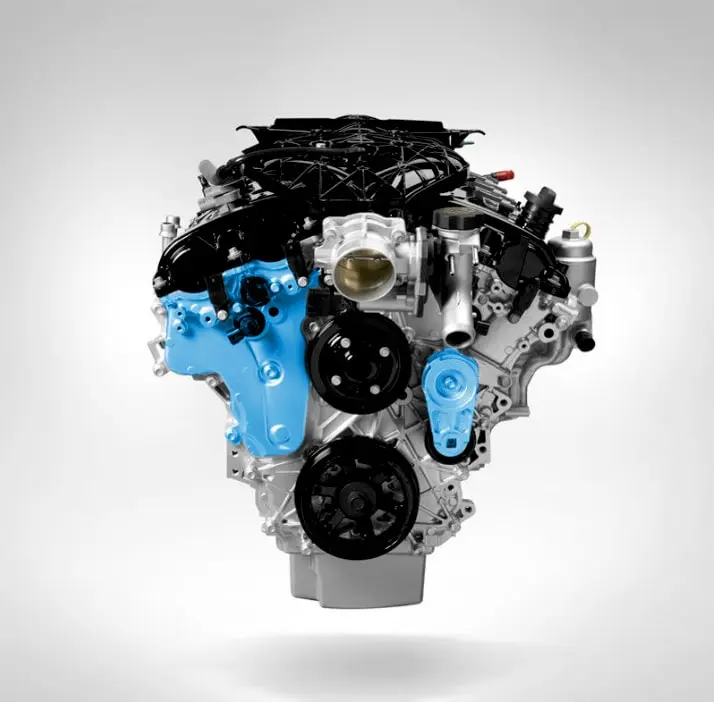Explore the Key Features of the 2.2 Ford Ranger Engine and Its Fuel Efficiency
Explore the Key Features of the 2.2 Ford Ranger Engine and Its Fuel Efficiency
Blog Article
Recognizing the Essentials of Car Engines: Types, Functions, and Features

Introduction of Vehicle Engines
A vehicle engine offers as the heart of an automobile, converting fuel right into mechanical energy to thrust it ahead. This detailed system makes up various components that operate in unison to ensure optimal performance and performance. The essential procedure of a car engine includes the inner burning process, in which gas and air are mixed, sparked, and expelled to create power.
The engine's design can considerably affect its performance, gas efficiency, and discharges. Trick components include the cyndrical tube block, pistons, crankshaft, and camshaft, each playing an essential function in the engine's total feature. The cylinder block houses the cylinders where burning takes place, while the pistons convert the eruptive power from burning right into straight movement. This motion is then transformed into rotational energy by the crankshaft, allowing the lorry's wheels to turn.
In addition to these parts, engines often utilize various systems such as gas shot, ignition, and cooling down systems to improve performance and durability. Comprehending the basic mechanics of automobile engines is vital for performing and diagnosing concerns upkeep, eventually contributing to the car's reliability and performance gradually.

Kinds of Cars And Truck Engines
Auto engines can be categorized into several kinds based upon their style, fuel kind, and functional concepts. 2.2 ford ranger engine. The most usual groups include internal burning engines (ICE), electric engines, and hybrid engines
Inner burning engines, which can be further separated right into gasoline and diesel motor, run by sparking a fuel-air blend to produce power. Fuel engines are normally lighter and smoother, while diesel engines are more fuel-efficient and deal higher torque.
Electric engines use electric power stored in batteries to power an electrical motor, supplying instant torque and absolutely no discharges throughout procedure. As innovation advancements, electric automobiles (EVs) are significantly ending up being preferred for their environmental advantages and reduced running expenses.
Crossbreed engines combine elements of both inner burning and electric engines, enabling versatile source of power and enhanced gas efficiency. They can run in numerous modes, making use of either the gasoline engine, the electrical motor, or both at the same time.
Each kind of engine has distinct advantages and disadvantages, influencing their application in various lorry types and market sectors, from compact autos to heavy-duty trucks. Recognizing these kinds is necessary for making educated decisions concerning automobile selection and performance expectations.
Engine Functions Clarified
Comprehending engine functions is important for realizing just how vehicles run efficiently. At the core of any interior combustion engine lies the fundamental process of transforming gas right into mechanical power.
The ignition happens next, firing up the mix and creating a rapid development of gases. This pressure drives the piston down during the power stroke, which eventually translates into the rotational activity of the crankshaft. The exhaust stroke after that gets rid of the invested gases from the chamber, giving way for a new cycle to commence.
In enhancement to these main functions, engines also incorporate systems that take care of air conditioning and lubrication, ensuring optimal functional temperature levels and decreasing friction in between relocating parts. This complex interplay of functions makes it possible for the engine to create the power required for vehicle propulsion while keeping effectiveness and reliability. Recognizing these features offers valuable understanding into the intricacies of vehicle engineering and improves the ability to detect and deal with engine-related concerns properly.
Secret Engine Attributes
Engine style incorporates several vital functions that considerably affect performance, performance, and sturdiness. One of one of the most crucial aspects is the engine arrangement, that includes inline, V-type, and flat layouts. Each configuration affects the engine's power, size, and equilibrium output, therefore impacting overall automobile characteristics.
Another vital attribute is the engine variation, describing the total volume of all cylinders. Bigger variations generally generate more power yet may compromise fuel performance. Engine products additionally play a crucial duty; high-strength and lightweight materials, such as aluminum and magnesium alloys, improve performance without adding extreme weight.
The type of fuel injection system employed-- such as multi-port or direct injection-- affects combustion efficiency and emissions. Supercharging and turbocharging are features that increase engine performance by forcing additional air right into the burning chamber, enhancing power outcome without dramatically raising engine dimension.
Last but not least, the visibility of sophisticated engine administration systems optimizes fuel-air mix and ignition timing, adding to smoother operation and better gas economic situation. Jointly, these attributes specify an engine's capacities, establishing the structure for its performance and durability in a competitive automotive landscape.
Upkeep Tips for Engines
Appropriate engine maintenance is crucial for making sure optimal performance and long life, as ignoring routine treatment can cause special info considerable issues down the line. To keep your engine successfully, start with regular oil adjustments, normally every 3,000 to 7,500 miles, depending upon the kind of oil made use of. Fresh oil lubes engine elements, decreasing rubbing and wear.
Furthermore, checking coolant levels is vital to prevent overheating. Make sure that the coolant is covered up and remains in excellent condition to keep efficient temperature guideline. Regularly change and evaluate air and link fuel filters, as clogged up filters can impede air movement and fuel distribution, compromising engine performance.
Furthermore, pay focus to spark plugs and ignition systems. Used or malfunctioning trigger plugs can result in misfiring and minimized performance. Inspecting the battery terminals and links for deterioration is additionally vital, as a weak battery can influence engine starting.

Conclusion
In summary, an extensive understanding of cars and truck engines incorporates numerous kinds, features, and vital attributes that substantially influence lorry efficiency. Internal burning engines, together with electrical and hybrid options, show diverse mechanisms for energy conversion. 2.2 ford ranger engine. Recognizing the vital functions, such as consumption and exhaust cycles, along with essential engine attributes like setup and fuel injection systems, equips auto proprietors with the expertise essential for efficient maintenance and operation, inevitably improving car longevity and performance
A car engine offers as the heart of a car, converting gas right into mechanical energy to propel it onward. The essential operation of a vehicle engine involves the inner combustion process, in which fuel and air are combined, sparked, and removed to develop power.
Regularly change and examine air and gas filters, as stopped up filters can hinder air flow and fuel distribution, compromising engine performance. - 2.2 ford ranger engine
In recap, a thorough understanding of vehicle engines includes various kinds, features, and essential attributes that substantially affect automobile performance. Recognizing the crucial functions, such as consumption and exhaust cycles, alongside important engine features like setup and gas injection systems, furnishes vehicle proprietors with the knowledge needed for reliable maintenance and operation, inevitably improving vehicle see this here durability and performance.
Report this page